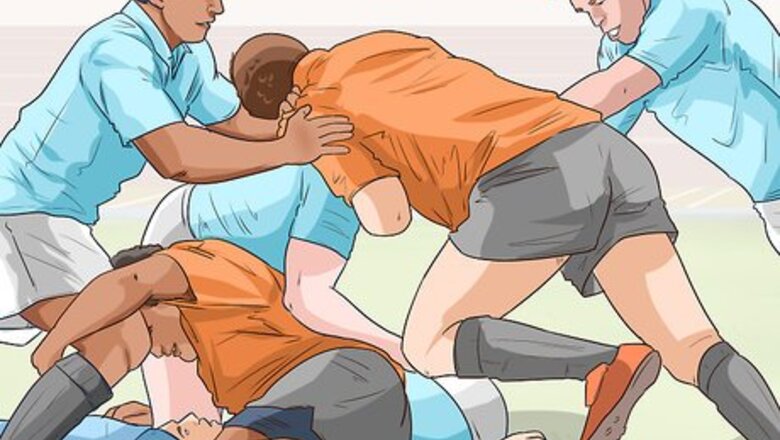
views
Initiating a Ruck
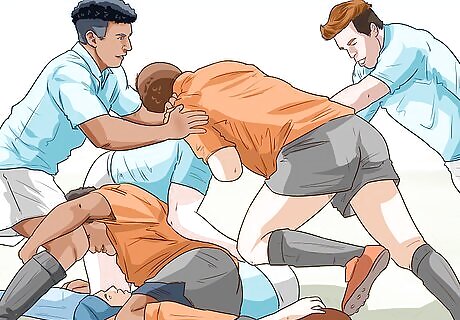
Join rucks to win control of the ball after a tackle. In rugby, a tackled player must immediately release the ball, either passing it or placing it on the ground. A ruck forms when multiple players contest the ball on the ground, fighting over the turf until one team can claim the ball. As long as a ruck is formed, no players can pick up the ball until the ball is exposed again, usually because one team has pushed the other team back far enough that they have won the ball. A ruck can be formed over any ball on the ground, but is most common after a tackle. Rucks must have, at a minimum, one player from each team. However, as many players can join a ruck as they want. As defined by the Rugby Laws of the Game, "A ruck is a phase of play where one or more players from each team, who are on their feet, in physical contact, close around the ball on the ground."

Decide whether to ruck or pick up and run when you're the first one to the ball. If no ruck is formed (ie. it is just you, the ball, and the tackled player on the ground) you can pick up the ball and run with it as long as you are on your feet. However, if there are defenders nearby, even if they haven't formed a ruck yet, it may be best to set up for a ruck and defend the ball. In general, if you can pick the ball up, you should. That said, the decision of when to ruck and when to run depends on the situation: Pick up the ball when there is open space, when a ruck is not yet formed, when you have a chance to steal possession from the other team. Form a ruck when there is already another defender nearby, if your team needs time to set up on defense, if you don't have any supporting teammates, or if you're sure you can hold the line until your team can set up an offensive strike. Remember, if there are other players their contesting the ball, a ruck has formed, and picking up the ball is illegal in a ruck.
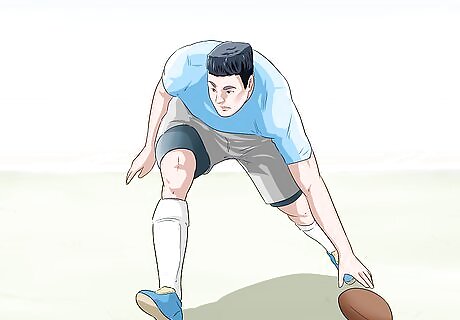
Step over the ball to initiate a ruck if you're the first one to the ball. Once you reach the ball, plant one foot firmly in front of it so that the ball is between your legs. Stepping over the ball puts it in your court -- the other team must now push you back past the ball in order to win it. You may have to step over the tackled player to do this, but that is also okay -- legally they cannot touch you or the ball and they must return to their feet in order to play.
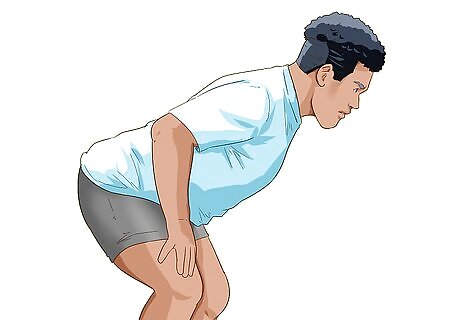
Crouch in a low, athletic stance to prepare for contact. Whether you are the first one their or about to meet an opposing player over the ball, you want to get low, stay on your toes, and keep your back straight. Your shoulders and head should be above your hips at all time -- keeping you safe and giving you leverage. If you're the first one there, hold this crouching position to make it difficult for an opponent to bowl you over. If an opponent arrived first, use this position to lock in, getting underneath him and sliding your head underneath his armpit.

Bind onto another player in the ruck with your whole arm. This is crucial to avoid penalties and injuries. You must, using your whole arm, bind onto someone else already rucking. You can't just put a hand on them, and you can't grab a handful of jersey. The easiest way to do this is to sling your arm up over the opponents back, reaching for their opposite rib cage. You can also reach around your teammates torso, holding on to lock you both together. Whatever you do, referees will be looking for this arm bind as a sign that a legal ruck has formed.
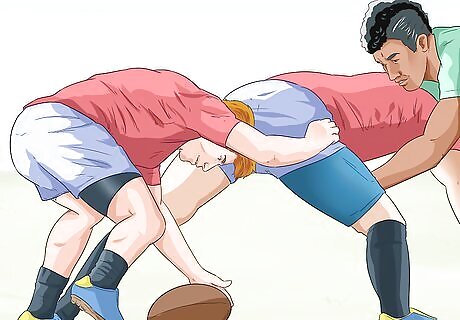
Join any already formed ruck "through the gate," or from the back foot. If there are already players in a ruck, you must join from the gate. The gate is the back foot of your last teammate, and is perpendicular to the goal line. You cannot hit a ruck diagonally or from the side -- you must join from directly behind your last teammate. Work on putting your shoulder right under your teammate's butt, using them like a battering ram to push through the other team. There is some leeway to this, of course. If you already have three teammates in the ruck, don't worry about which one is "last." Simply join from the back, not the sides, and you'll be fine.
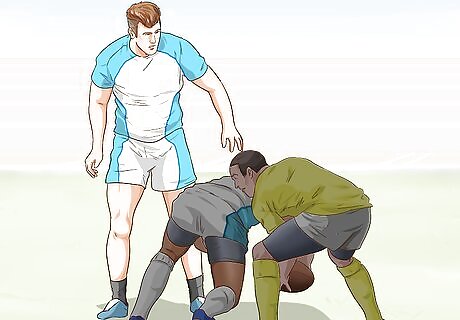
Bind on with teammates to ruck as a group, but choose your moments wisely. Most rucks have at least 2 players per side, though they do form with more or less depending on the game. The more players there are in a ruck, the less there are defending the rest of the field, so a good rule of thumb is to only join rucks you know you can win. Knowing when to join your teammates in a ruck is a crucial skill to develop, and will come with experience. If you're winning a ruck as a team, don't join it. All you'll do is limit your team's options when the ball comes out. Similarly, if you've already lost or almost lost a ruck, get out of there and defend the rest of the field. If you see a teammate being tackled and know that there are more defenders than teammates, get over there before he hits the ground to support your offense and hold onto the ball. If you're near a stalemating ruck, throw yourself in quickly -- this could be the best chance to shift momentum and win the ball.
Rucking Successfully
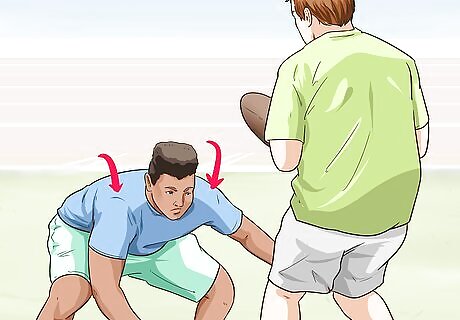
Keep your head and shoulders low, but above your waist. Once you're off your feet you can no longer legally ruck, but the lower you are the more leverage you have over your opponent. The best way to prepare is to crouch, lowering your butt and bending from your waist so that your spine stays straight. Think of an Olympic wrestler at the start of a match, or your position right before a tackle.
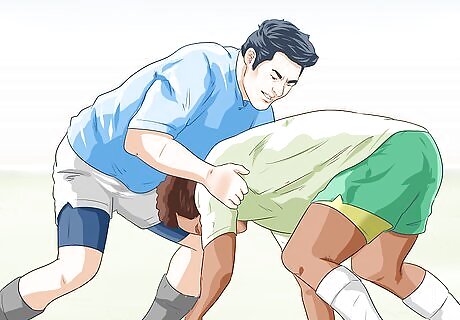
Push up on the opponent to gain leverage. One of the best ways to win a ruck, especially against a player bigger than you, is to get them off their feet. The principles are the same as tackling -- by taking away their balance you gain the upper hand and can put your momentum to good use. Once you've locked on to them, get lower than them while still keeping your shoulders above your hips. Push diagonally up and out, simultaneously lifting them onto their heels and driving them back, to win almost any ruck. Remember that this strategy only works if you can get lower than your opponent. Drop your butt and keep your spine straight as you engage, then push from your quads. If they are their first and have a foot over the ball, pick up their thigh to put them on one foot. This "leg-lift" is one of the best ways to clear a ruck you arrive late to.
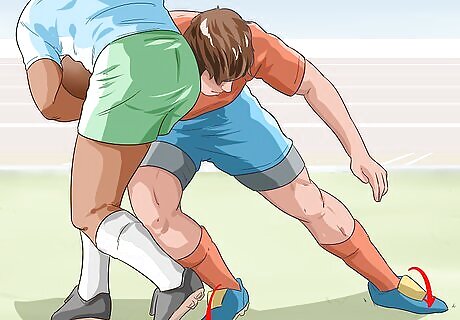
Keep your feet moving with quick, chopping steps forward. Drive yourself through the opponent, always moving your feet. If you're low enough, this should be enough to win rucks against less experienced players, as the natural instinct is to plant your feet and try to hold your ground. Always keep pushing, imagining that you're driving the player back off the ball. On offensive rucks, there are some times when you want to set your feet. If you've won the ball, you have support, and your team is planning an attack, hold your ground once you're sure your team has the ball. On defensive rucks, your goal is to blow the ruck up. Keep pushing and fighting the opponents back. At the very least, force them to scramble a few new players to the ruck or pressure them to remove the ball and pass it before they're ready.
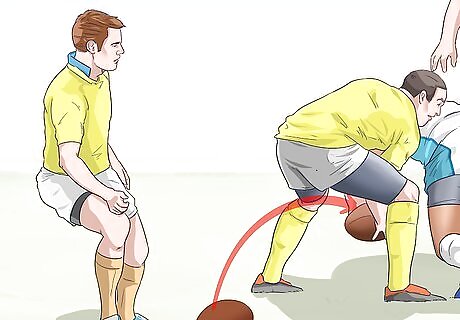
Use your feet to roll the ball back. You cannot use your hands once a ruck is formed. But you can use your feet. If you're on stable enough footing or have started to gain an advantage in the tug-of-war with your opponent, hook the ball back with your heel and send it towards your teammates. If you're in danger of losing the ball, or the other team already has the advantage, you could even try kicking the ball up against their legs, the deflection may come back your way, and at the very least you can disorganize whoever they have reaching for the ball. Only lift a foot for a kick if you're sure you won't be immediately pushed back after losing balance. Holding the ruck is priority one, hooking the ball is a nice bonus if you can manage it.
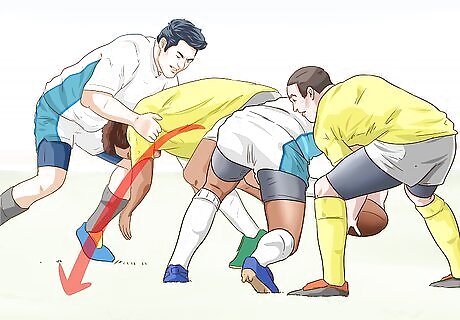
Know when to clear players from the ruck. Blowing up a ruck, or breaking it down and removing players, is a good way to turn the tide of a contested ruck in your favor, or simply make life difficult for the opposing teams. Removing players from the ruck is especially crucial on defense, or if one sneaky enemy arrived first is about to steal the ball. The idea is that you sacrifice your own role in the ruck to take out an opponent out as well, allowing your teammates to get the ball. No matter how you do it, focus on clearing one player away, not multiple at once. There are several ways to take a player out of the ruck, including: Leg-lift: This is basically a tackle, but you must bind with the player and stay on your feet for it to remain legal. When there is one player in a ruck, stay low and run into the contact. Try to grip one arm around the opponent's back and the other around his thigh or waist, lifting up one leg as your drive forward. Twisting out: This is best for group rucks, or when you're engaged with one person but have support coming. While engaged, drop one of your shoulders. This should cause you both to rotate up and out, falling away from the ruck. Keep pushing to the side you dropped your shoulder to peel both of you off the ruck. Throwing him through the gate: If a you see a player bowling into the ruck with a lot of speed, set up and let him approach. As he goes to make contact, shift out of the way, grab his back or jersey, and throw him right over the ball, letting his own momentum carry him uselessly into your territory. He cannot, once crossing the ball, play again until he returns to his side of the field.
Knowing the Rules of a Ruck
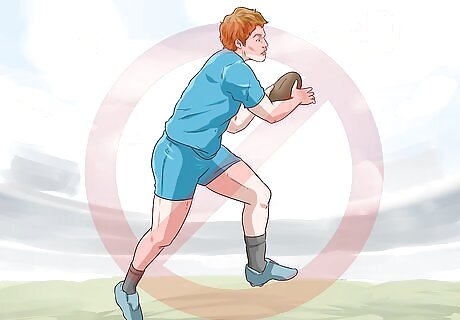
Know the infractions and penalties that you can commit in the ruck. There are a lot of rules to rucking, but most of them are easy to avoid if you stay on your feet, play the defender instead of the ball, and enter through the gate. That said, the following infractions will lead to a turnover and chance for your opponents to score, and should be avoided whenever possible: You cannot collapse a ruck by falling, tripping, jumping, or otherwise causing the ruck to hit the ground. You cannot ruck or play against anyone on the ground. You cannot intentionally step on a grounded player. Any player on the ground in the ruck (such as the tackler) cannot play the ball and must make an effort to leave the ruck. You cannot fake that the ball has left the ruck when it has not. You cannot fall on or otherwise smother the ball at any point, even as the ball leaves the ruck. You cannot use your leg/feet to pick up or trap the ball, it must be free to move.
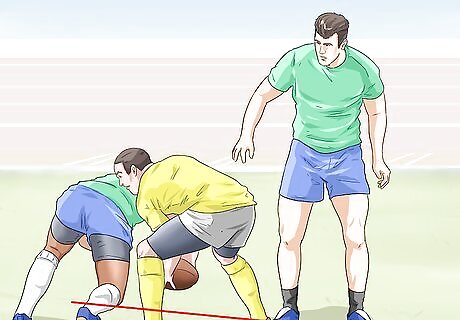
Stay behind your teammate's back foot, which forms the offside line, if you're not rucking. If you don't participate in the ruck, stay behind the offside line. If you don't enter the ruck, be sure to stay behind the offside line, which is the line formed by the rear foot of the backmost teammate in the ruck. In other words, you must be behind every single player in the ruck to be onside. If the ruck moves, you need to move with it. The offside line will change, and it is your job to watch it. If you exit or are ejected from the ruck while participating in it, you must immediately move behind the ruck. Loitering near the sides will result in a penalty.

Form a maul, not a ruck, over a player who has been tackled by has not hit the ground yet. When a player is tackled, but propped up by a teammate before she has hit the ground, a maul forms. A maul is just like a ruck, except the ball moves with the maul. Both teams can commit as many people as they want to the maul, pushing and fighting for space. Mauls have their own set of rules, but all players must still bind with one full arm before joining.

Return to your feet after making a tackle to join the ruck. You can only join the ruck from your feet, so once a tackle is made, you need to get up. You cannot hold onto the ball or the other player once the tackle is made. However, once you're on your feet again you can grab the ball or form a ruck, depending on how quickly you got up.
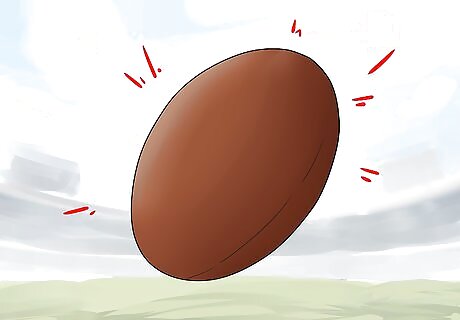
Know that the ruck is over once the ball is exposed. The easiest way to tell if a ball is loose is if it could be rained on. If a bird high above the field could see the ball without a player blocking it, the ball is out. Anyone can pick it up and play it. As long as the ball is under someone's foot or within the ruck, no one can use their hands. Referees are lenient with this rule once a team has won the ball clearly. For example, if the ball is between the feet of your last teammate in the ruck you can pick the ball up and pass from the ground.


















Comments
0 comment